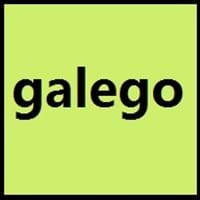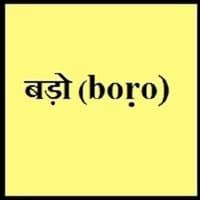Galician and Bodo
Countries
Galicia
Assam, India
National Language
Galicia
Assam, India
Second Language
Not spoken in any of the countries
Not Available
Speaking Continents
Europe
Asia
Minority Language
Not spoken in any of the countries
Not Available
Regulated By
Royal Galician Academy (Real Academia Galega)
Not Available
Interesting Facts
- In Galician language, there are no compound tenses.
- The earliest document in Galician language was written in 1228 which was legal charter for a municipality of Galicia.
- In ancient times, Bodo language was written using Assamese script and Roman script.
- Bodo Language is written using Devanagari script since 1963.
Similar To
Portuguese Language
Dimasa language, Garo language, Kokborok language
Derived From
Latin
Not Available
Alphabets in
Galician-Alphabets.jpg#200
Bodo-Alphabets.jpg#200
Writing Direction
Left-To-Right, Horizontal
Not Available
Thank You
Grazas
Not Available
How Are You?
Que tal estás?
Nungni khabora ma?
Good Night
Boas noites
मोजां हर (Mwjang Hor)
Good Evening
Boa tarde
Not Available
Good Afternoon
Boa tarde
Not Available
Good Morning
Bos días
मोजां फुं (Mwjang Fung)
Please
Por favor
अननानै (Onnanwi)
Sorry
Síntoo!
Not Available
I Love You
Ámote
अननाइ नों (onnai Nwng)
Excuse Me
Perdoe!
Not Available
Dialect 1
Eastern Galician
(Sønabari) Western Boro dialect
Where They Speak
East Galicia
Bongaigaon, Kokrajhar
Dialect 2
Central Galician
(Sanzari) Eastern Boro dialect
Where They Speak
Central Galicia
Barpeta, Darrang, Kamrup, Nalbari
Dialect 3
Western Galician
(Hazari) Southern Boro dialect
Where They Speak
West Galicia
Assam, India, Nepal
Speaking Population
Not Available
Not Available
Native Name
Galego
बड़ो (boṛo)
Alternative Names
Galego, Gallego
Bara, Bodi, Boro, Boroni, Kachari, Mech, Meche, Mechi, Meci
French Name
galicien
Not Available
German Name
Galicisch
Not Available
Pronunciation
[ɡaˈleɣo]
[bɔɽo]
Ethnicity
Not Available
Bodo, Mech, (Assamese)
Language Family
Indo-European Family
Sino-Tibetan Family
Subgroup
Not Available
Tibeto-Burman
Branch
Not Available
Not Available
Early Forms
Medieval Galician
Not Available
Standard Forms
Galician
Not Available
Signed Forms
Not Available
Not Available
Scope
Individual
Individual
ISO 639 1
gl
Not Available
ISO 639 2/T
glg
Not Available
ISO 639 2/B
glg
Not Available
ISO 639 6
Not Available
Not Available
Glottocode
gali1258
bodo1269
Linguasphere
51-AAA-ab
Not Available
Language Type
Living
Living
Language Linguistic Typology
Not Available
Not Available
Language Morphological Typology
Not Available
Not Available
All Galician and Bodo Dialects
Most languages have dialects where each dialect differ from other dialect with respect to grammar and vocabulary. Here you will get to know all Galician and Bodo dialects. Various dialects of Galician and Bodo language differ in their pronunciations and words. Dialects of Galician are spoken in different Galician Speaking Countries whereas Bodo Dialects are spoken in different Bodo speaking countries. Also the number of people speaking Galician vs Bodo Dialects varies from few thousands to many millions. Some of the Galician dialects include: Eastern Galician, Central Galician. Bodo dialects include: (Sønabari) Western Boro dialect , (Sanzari) Eastern Boro dialect. Also learn about dialects in South American Languages and North American Languages.
Galician and Bodo Speaking population
Galician and Bodo speaking population is one of the factors based on which Galician and Bodo languages can be compared. The total count of Galician and Bodo Speaking population in percentage is also given. The percentage of people speaking Galician language is Not Available whereas the percentage of people speaking Bodo language is Not Available. When we compare the speaking population of any two languages we get to know which of two languages is more popular. Find more details about how many people speak Galician and Bodo on Galician vs Bodo where you will get native speakers, speaking population in percentage and native names.
Galician and Bodo Language Codes
Galician and Bodo language codes are used in those applications where using language names are tedious. Galician and Bodo Language Codes include all the international language codes, glottocodes and linguasphere.





